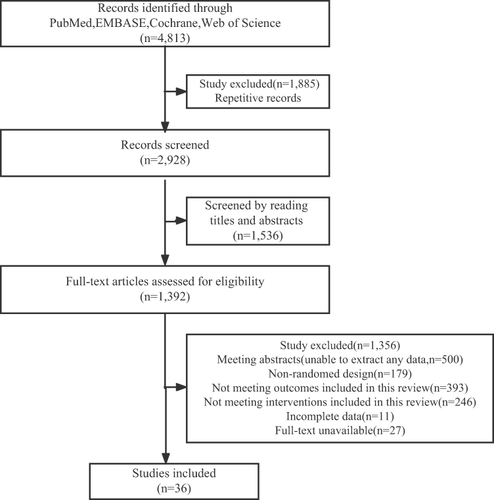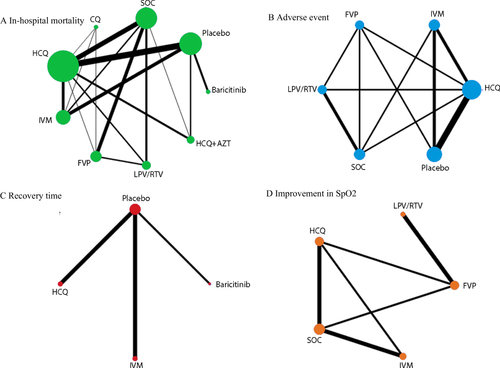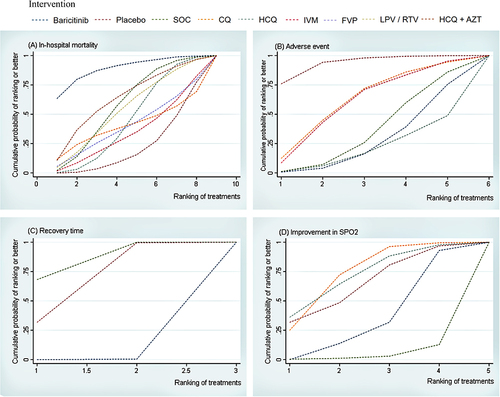Figures & data
Figure 1 Flow diagram of the selection strategy.

Figure 2 Network of eligible comparisons for in-hospital mortality, adverse event, recovery time, and improvement in SpO2.

Table 1 League Table of Network Meta-Analysis Results of Interventions for In-hospital Mortality(A), Adverse Event(B), Recovery Time(C), and Improvement in SpO2 (D)
Figure 3 Ranking of treatment strategies based on probability of their protective effects on outcomes of in-hospital mortality (A), adverse event (B), recovery time (C), and improvement in SpO2 (D) by cumulative ranking area (SUCRA). Greater probability, stronger protective effects.

